Telescope Scheduler
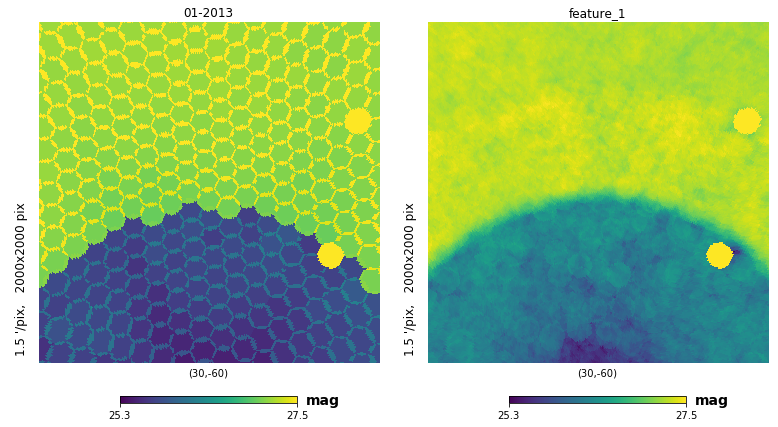
Dithering vs no dithering included in the telescope scheduler.
on github
Working with collaborators in Computer Science and Operations Research, I developed a new telescope scheduling framework capable of intelligently observing 2 million exposures over a 10-year survey.
- Apply Operations Research techniques to telescope scheduling
- Differential Evolution optimization
- AI using Markov Decision Processes
- Python, numpy, scipy, sqlite
Results published in Naghib, et al. 2018.
Satellite Dodging
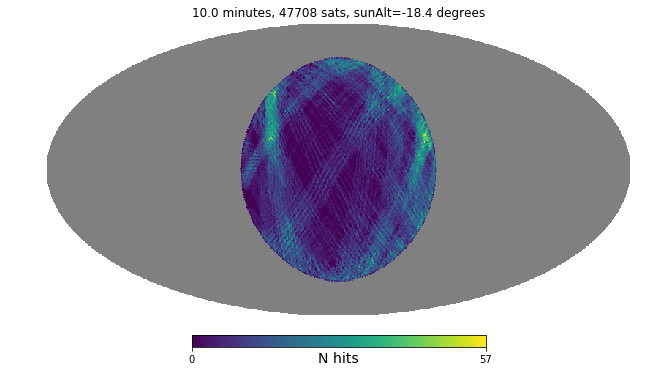
Trails that would be left on an all-sky image by a satellite mega-constellation.
on github
Studied the impact of proposed satellite mega-constellations on the LSST observing strategy.
Reults published in Tyson et al 2020
Narrow Band Imaging
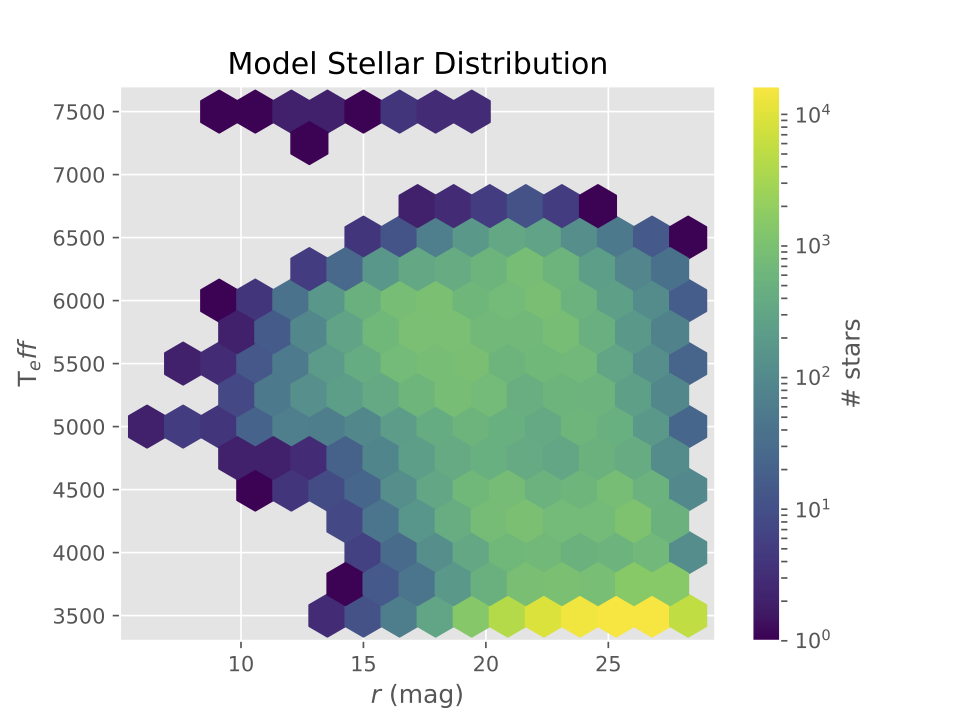
Input stellar population for modeling narrow band observations
Contributed an Astro2020 decadal review paper on the science potential of using narrow band filters on LSST.
Results published in Yoachim, et al. 2019.
Gaia-LSST Calibration
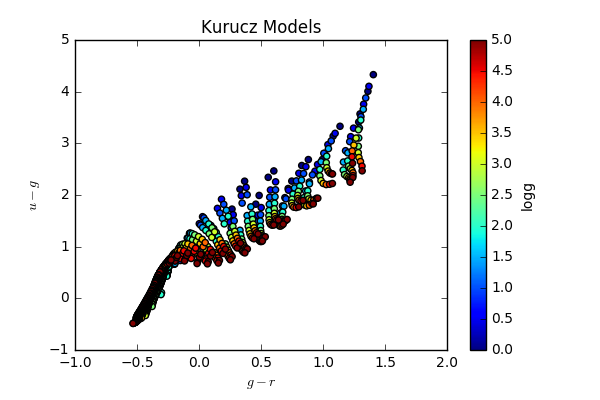
Theoretical stellar models
on github
A project collaborating with the Gaia team in Heidelberg and the LSST calibration group.
- Simulation of Gaia spectroscopic observations
- Large database comparison
Written up as Sims Tech Note 008
Cloud Modeling
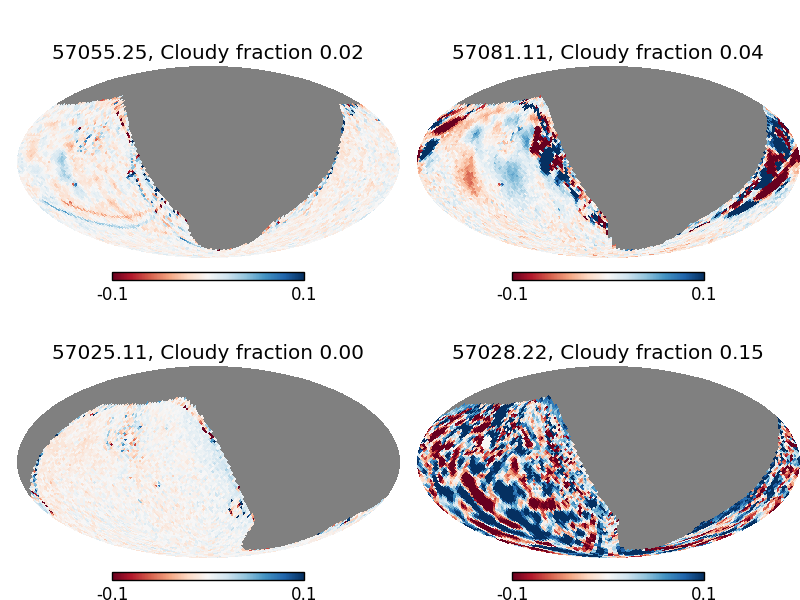
Example of using all sky images to detect clouds.
on github, and github
This is a project to use an all-sky camera to track the current position of clouds and predict their future motion.
- All sky camera photometric pipeline using Astropy, Healpy, and Pandas.
- 2D Fourier space analysis
LSST Sky Background
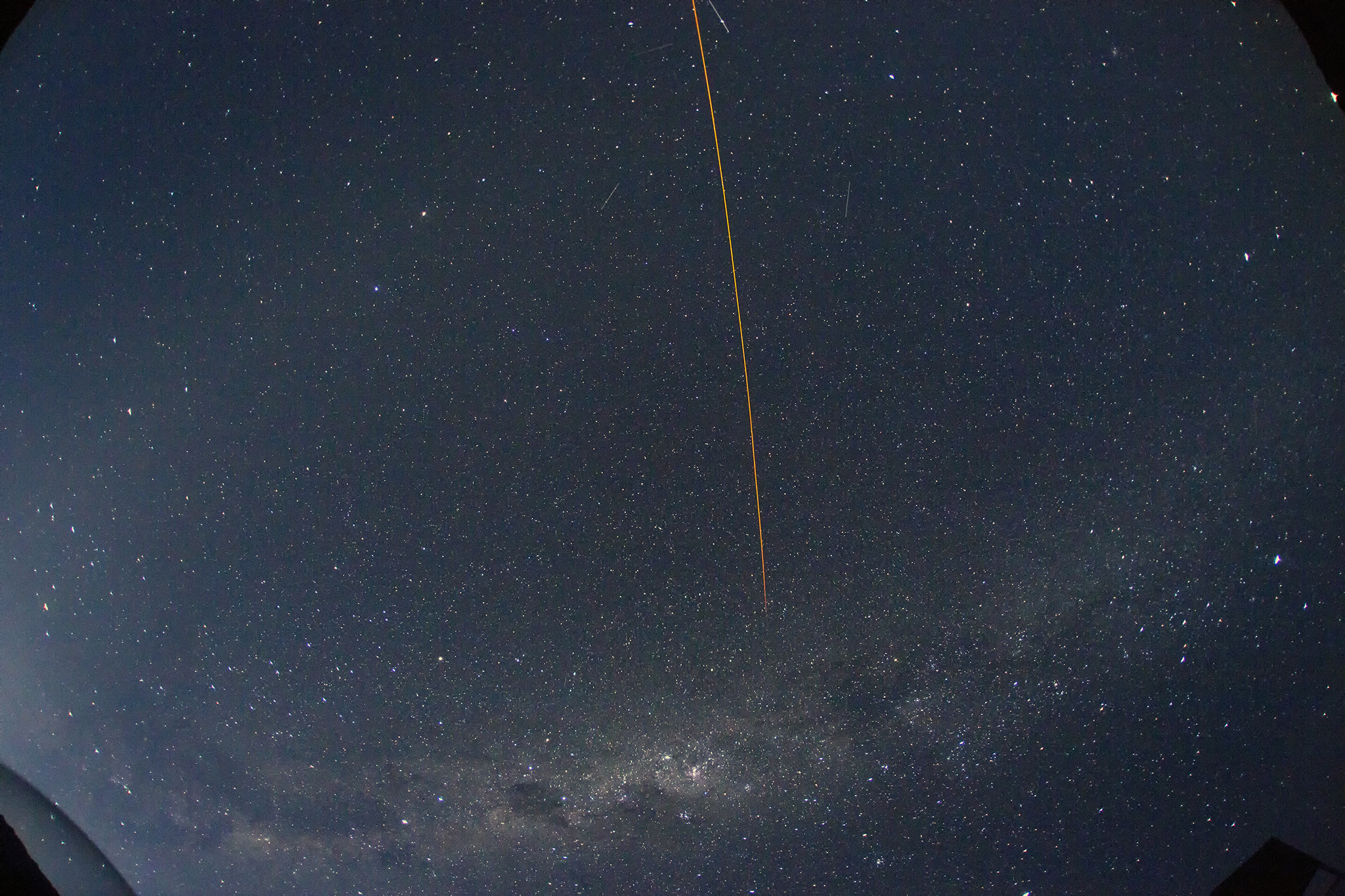
All-sky camera image from Cerro Pachon. Orange streak is the Gemini adaptive optics laser. <pew> <pew>.
on github
Combined previous sky models from ESO and our own observations to create a code capable of predicting sky brightnesses in Chile including airglow, moonlight, and twilight components.
- Fitting all-sky camera data (42,000 images containing 91 million stars)
- Optimize performance by creating pre-computed interpolation library
Yoachim, et al., SPIE 2016
Giant Low Surface Brightness Galaxies
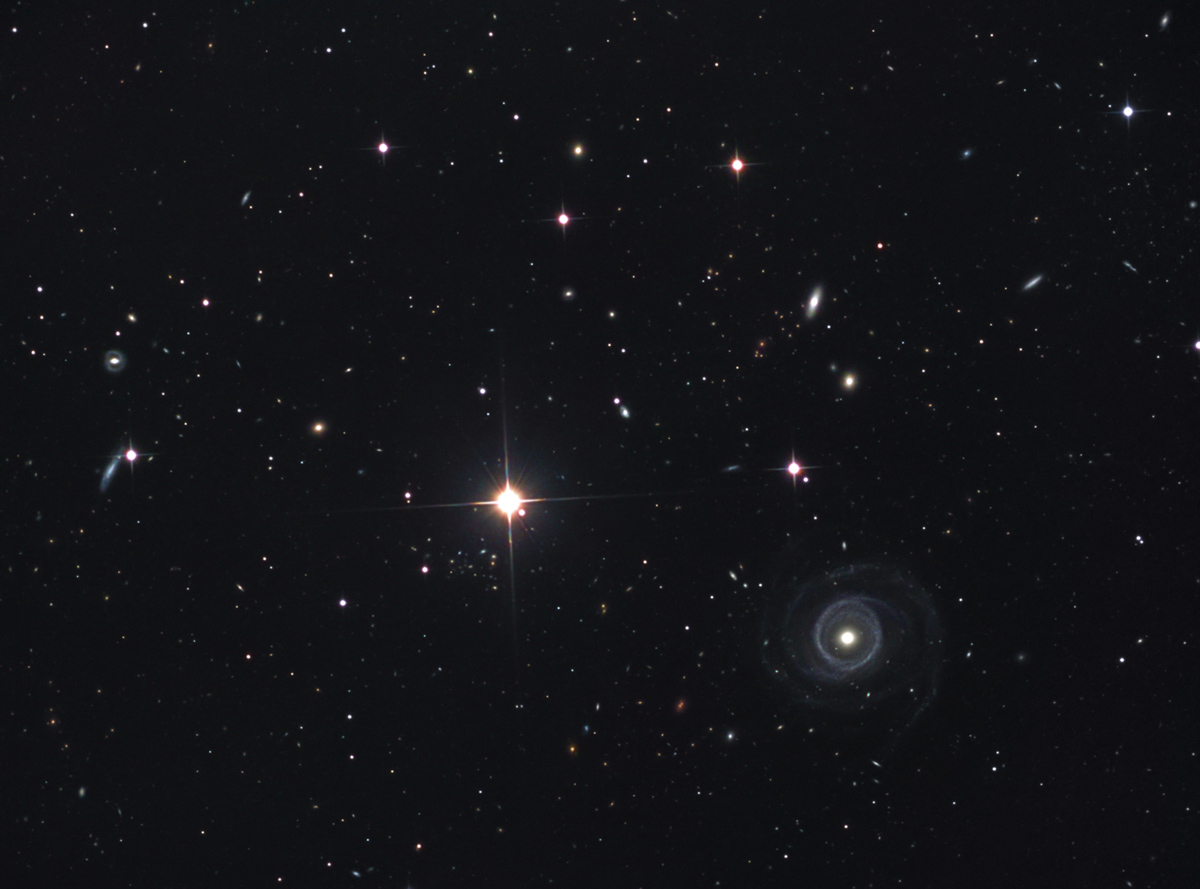
here’s a fancy pic of the GLSB galaxy UGC 6614. From this page where they combined 9.5 hours of observing time on a 0.6m telescope!
I’ve been working on a project to study Giant Low Surface Brightness Galaxies. These are bizarre systems that look like normal spirals, but are actually an order of magnitude larger in diameter. There have been some creative formation theories proposed for these,
- Integral Field Spectroscopy
- 2D velocity field fitting
- Stellar population fitting
- Statistical comparison using the SDSS database
Survey Analysis and Visulization
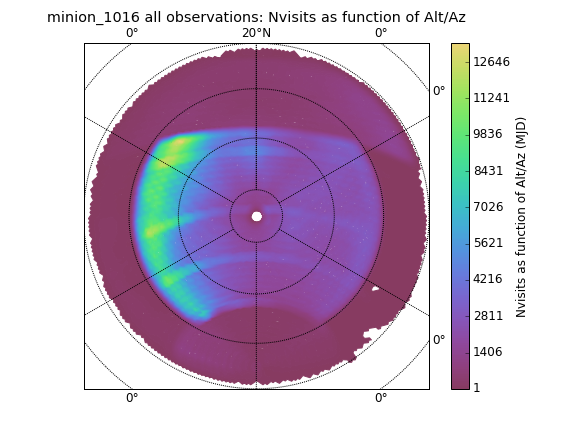
Visualizing how LSST will point over 10 years. In this particular simulation, the telescope tended to get stuck observing things at high airmass in the west. We’ll fix that before the survey starts.
on github
I’ve been working with the OpSim group to help analyze how well simulated LSST surveys perform. A typical 10-year LSST survey includes 2.5 million visits.
- Python, healpy, numpy, matplotlib, SQL, sqlite
- Automated analysis and data visualization package
- Tornado web framework
- Collaborate with scientists to develop science performance metrics
- Manage public github repo to collect contributions to the code
Astronomer Publishing Lifetimes
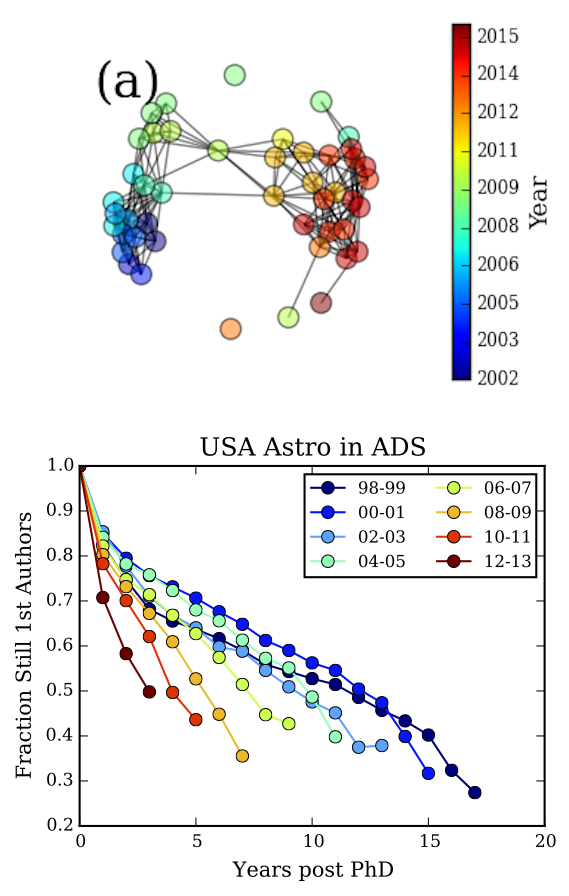
Published paper graph network (top), how long different PhD classes stay publishing as first authors (bottom)
on github
Science funding agencies send out numerous surveys to track the state of the science job market. Given such surveys can have low response rates and biases, I realized the large ADS database which tracks virtually all astronomy publications would be a better way to measure science career lifetimes.
- graph network analysis in Python with networkx
- text information analysis with sklearn
- High volume database scraping of ADS
- Python, Numpy, Pandas, matplotlib
Techinique expanded to other fields in this paper
Side Projects

Command line emoji recommendations
Sometimes things strike my fancy and I do a little side project for my own entertainment.
LSST Photometric Uber-Calibration
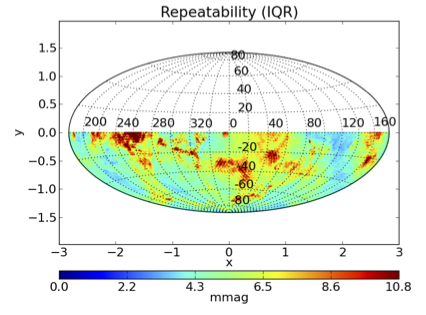
Residuals after running the self calibration simulation
on github
Simulating the calibration of LSST observations for annual data releases.
- Python parallel (ipyparallel)
- Big data project simulating 109 data points and inverting a 107x108 element matrix
- National supercomputer facilities (XSEDE)
- databases (SQL, Mysql, postgres)
Satellite Galaxies
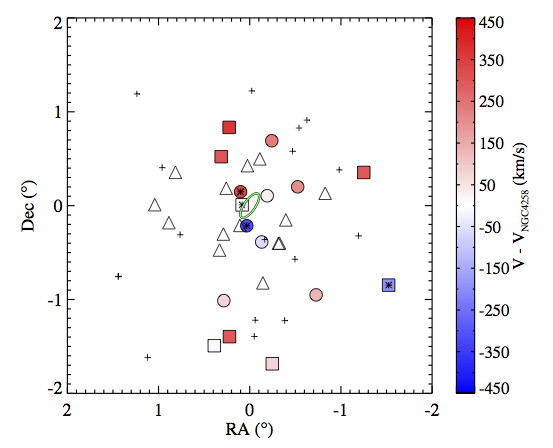
Satellite galaxy velocities around M103
A survey around the nearby galaxy M106.
- Spectroscopic survey with the APO 3.5m
- Mentored student project which was published
- archival SDSS data
Paper: A Survey of Satellite Galaxies around NGC 4258, Spencer, Meghin, Loebman, Sarah, Yoachim, Peter, ApJ, 788, 2, (2014)
Stellar Radial Migration
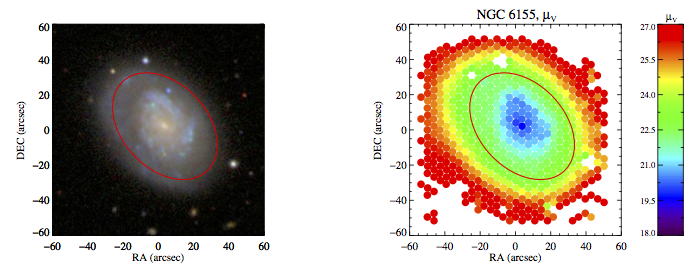
A plot of one of our galaxies as seen in SDSS and as seen through the VIRUS-P IFU.
A project looking to confirm theoretical predictions of how stars can migrate in spiral galaxies
- Observations with an IFS at McDonald Observatory
- Data reduction and analysis in IDL and Python
Papers:
- Spatially Resolved Spectroscopic Star Formation Histories of nearby Disks: Hints of Stellar Migration, Yoachim, Peter, Roskar, Rok; Debattista, Victor P., 2012, ApJ, 752, 97
- IFU Spectroscopy of the Stellar Disk Truncation Region of NGC 6155, Peter Yoachim, Debattista, V., Roskar, R., ApJL, 716, L4
Cepheid Variables
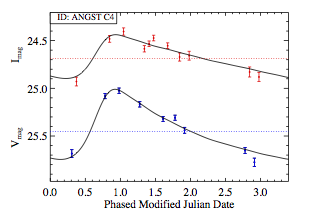
Cepheid light curves fit with templates.
Generated Cepheid light curve templates that were then used on Hubble Space Telescope observations. Written in IDL, would be nice to port over to Python.
- Machine Learning: Principal Component Analysis of time series data
- Archival data analysis
- Released code to the community and had it used in other published papers
Papers:
-
A Panoply of Cepheid Light Curve Templates, Yoachim, Peter; McCommas, Les P.; Dalcanton, Julianne J.; Williams, Benjamin F., AJ, 137, 6, (2009)
-
The ACS Nearby Galaxy Survey Treasury. III. Cepheids in the Outer Disk of M81, McCommas, Les P.; Yoachim, Peter; Williams, Benjamin F.; Dalcanton, Julianne J.; Davis, Matthew R.; Dolphin, Andrew E., AJ, 137, 6, (2009).
Thick Disks
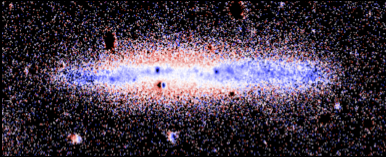
B-R image of an edge-on disk galaxy
My PhD thesis focused on observations of nearby edge-on galaxies.
- Photometric and spectroscopic observations of nearby disk galaxies with the APO 3.5m and Gemini North and South Telescopes
- Data reduction in IRAF and IDL
- Model fitting in IDL
Papers:














